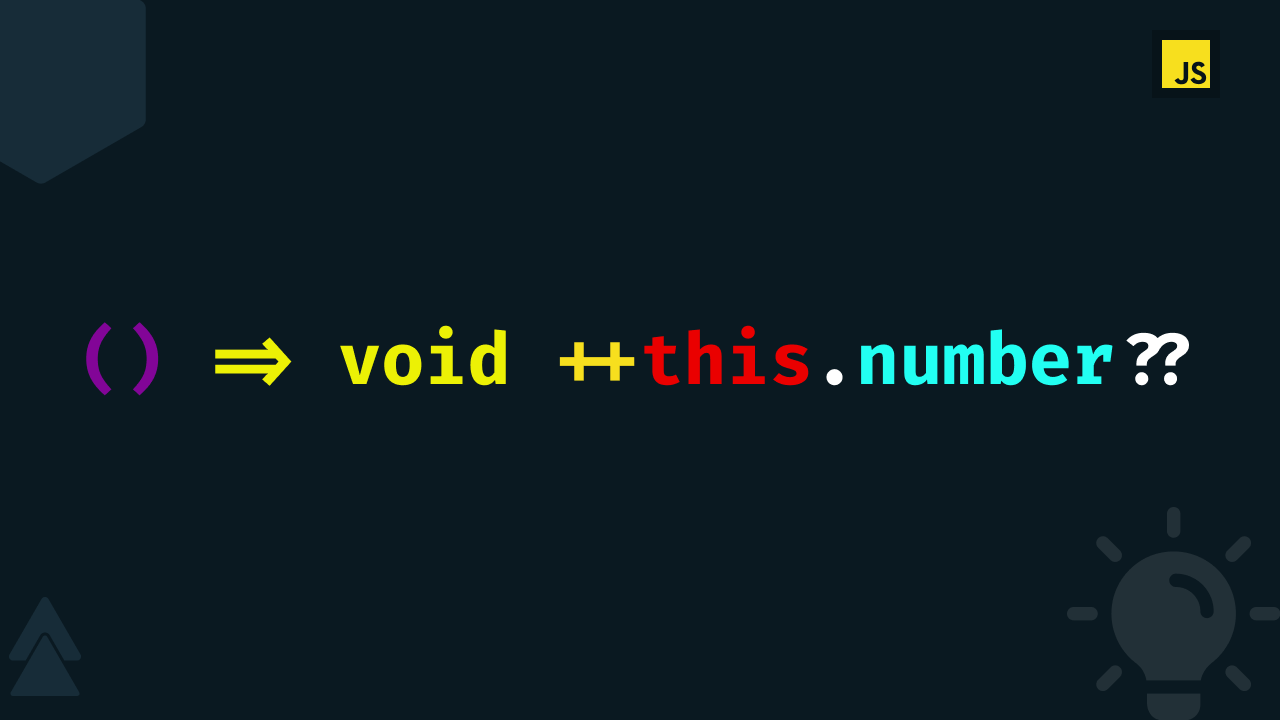Using void to implicitly return nothing
3 min read
People coming from statically typed programming languages like C++, C# or Java must have heard of the void keyword. When added as a return type of function, it signifies that the function returns nothing. The TypeScript developers must also have seen this when the types are defined. But, many of the JavaScript developers are unaware of the word. And why would they be concerned about void? It just returns undefined.
The function declaration implicitly returns undefined if there is no return statement in the function. The function expression also does the same if it has a function body, or to be more clear function with {} around it. When written in single line though, it returns what the expression - or the function body - returns. What if you want to return nothing from the function, but the code is of just one line. You wrap it in {}. As simple as that.
There's another way to do the same without wrapping the function with {}. It might not be very useful. You might stick with the same way by adding {} and its perfectly fine. This is just for some fun.
The void keyword
Let's say you have a class where you increment and decrement a number. You just change the value of the variable and you don't need to return anything. You write two arrow functions to do so.
class Counter {
number = 0;
increment = () => ++this.number; // returns previous number + 1
decrement = () => --this.number; // returns previous number + 1
}
As the two functions are in one line, it would return the updated number. What if you don't want to do so. Well, you just add the void keyword in front of it.
class Counter {
number = 0;
increment = () => void ++this.number; // returns undefined
decrement = () => void --this.number; // returns undefined
}
You can try doing 2 + 2 in the browser console - not in any function, just type 2 + 2. When you hit enter, you see the value returned is 4. Now try doing void (2 + 2), it will return undefined. One thing to remember is if you try void 2 + 2, the compiler will think that you are adding void 2 and 2, which will result in NaN. So be careful with this.
A use case
Well that's fine. But are there other use cases you might ask. You might be using React's useEffect hook to do different things. If you are using some code that does not return a function or undefined in useEffect hook, it will yell at you for doing so. For example, if you are using setInterval in useEffect using single line arrow function, React will throw an error as setInterval returns a number and useEffect is not expecting that. You can get over it by just putting void in front of it.
// Throws error
useEffect(() => setInterval(() => {}, 1000), []);
// Works fine
useEffect(() => void setInterval(() => {}, 1000), []);
Conclusion
This is something not many people know. I might not even use this myself because adding code in future might have to require to undo the changes and write it the way we all have been writing. But, as I said, this is something that I discovered and thought was fun.
